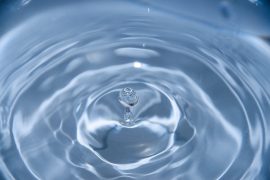Tap water may be safe to drink, but even the safest tap water contains several impurities that may harm the body in the long run. This is where filtration comes in. But not everyone can afford a filtration system. Alternatively, you may need drinking water in emergency situations.
With a home water filter, you have an affordable filtration solution and capable of saving the day in times of emergency.
Why Do You Need A Water Filter?
Filtering your water is necessary for the following reasons;
Maintaining drinking water standards.
There are specific standards for tap water in American homes, as set by the Environmental Protection Agency. But these standards may not be in line with your water quality goals in some cases.
For instance, arsenic, a popular human carcinogen, has a maximum contaminant level goal (MCLG) of 0.0 mg/L, but the EPA allows a maximum of 0.01 mg/L in tap water.
The MCLG measures the highest amount of contaminant that can be found in tap water before it is tagged unfit for drinking. Therefore, anyone who drinks tap water that adheres to EPA water quality standards can still consume harmful amounts of arsenic.
Also, EPA does not regulate all the contaminants in water. Currently, it regulates 90 contaminants, with several more unaccounted for.
Eliminating health concerns
No one knows or can control what tap water undergoes from when it leaves the municipal treatment facility till it gets into their homes. The Flint, Michigan crisis is an indication of this. There was a change in water source, but the city didn’t treat the water after that. And this led to the leaching of lead into the city water from pipes. So the unsuspecting inhabitants of the area ended up using the water as the regular safe tap water. Lead can harm the normal development of the infant’s brain, in addition to causing other serious problems.
It is always advisable to store sufficient filtered water for emergency situations like shutoffs or other cases that cut the drinking water supply. Having a water filter at home can also save the day.
If you are looking to organize outdoor activities like backpacking and camping, you need safe drinking water. You are often stuck with natural water containing harmful germs and contaminated materials caused by wild animals and other human activities. This water only becomes fit for drinking after filtration.
Filtering your water removes contaminants, eliminates bad odor, and improves the taste. It is also an eco-friendly way of enjoying healthy water, considering you are not adding to waste through plastic bottles.
4 Useful Tips for Filtering Water at Home
Having established the importance of clean, potable drinking water, we should consider the best ways to access it. Unfortunately, primary water sources become contaminated in the event of disasters and similar emergency situations. So, how do you get clean drinking water in such cases?
Not to worry. Here are some practical ways to purify water at home, either for regular indoor, outdoor, or emergency situations.
Boiling
Boiling is the simplest and easiest filtration method. First, pour the contaminated water into a container and heat over an open flame or stovetop burner. Leave until it reaches a full, rolling boil, and allow boiling to continue for another five to ten minutes. Note that more hours of boiling translate to more purity.
The boiling eliminates all the oxygen present in water, giving the boiled water a flat taste. However, this is not a major problem – shaking the purified up slightly should fix this. You can also improve the taste by adding a pinch of salt to each quart of the water.
Water Filters
Filtering water for safe drinking can be done in a few ways. You can use porous cotton cloths or coffee filters to filter out harmful contaminants. However, they are not as efficient as other methods in removing all contaminant particles.
Water filters are another option. Unlike porous materials, they are more effective at removing almost all contaminants from water, including soil and tannin particles. Water filters are available in different types and forms. There are portable ones that are handy for emergency and outdoor uses. There are also filtration systems designed for your home faucets or installed on water pitchers and drinking bottles.
You will find a wide range of water filters in the market, all in different sizes, shapes, and prices. However, they mostly follow the principle of forcing the water through a ceramic or charcoal filter, followed by chemical treatment.
Filtering water using water filters is not a perfect method. Sometimes, the filters may become clogged faster, especially if used for a long time without maintenance. You may need to clean them for reuse or discard them and buy a suitable replacement.
Mechanical Filtration
What happens in the mechanical filtration process is the removal of larger particles from the water using a very fine sieve. This method is efficient and effective, especially for water with a large amount of sediment.
But this method is not efficient in removing chemical impurities from water, viruses, and bacteria.
Ozone Filtration
There are ozone filters designed to kill microorganisms present in water, protecting you from most disease-causing organisms in the water. However, this method is not suitable for the removal of sediment or chemical impurities. Therefore, they are best combined with other water filtration methods for maximum efficiency.
Finally…
This article has discussed the various ways to filter or purify water for drinking. The mode of operation and capabilities of each method differ. The only way to achieve flawless filtration may be to combine two or more of these techniques.
You can decide the best filtration technique for your water by knowing all the impurities present in the water in your area. Based on this finding, you can choose the methods that are most effective against these contaminants.
